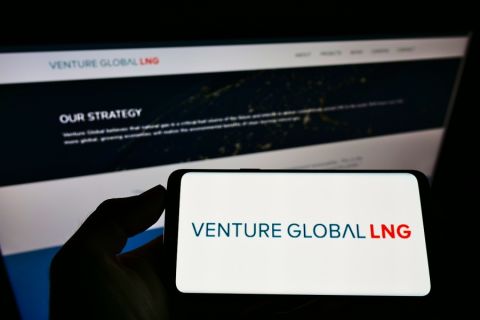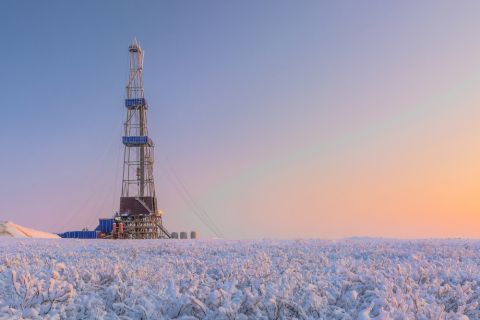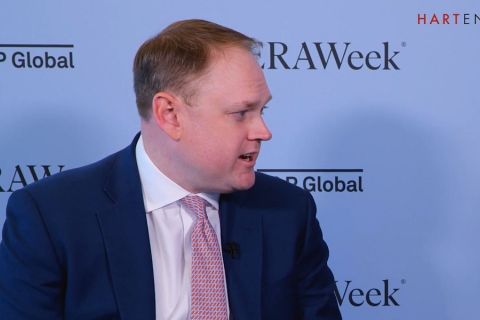Earthstone Energy Inc. has been on a buying spree as of late.
Since the end of 2022, The Woodlands, Texas-based independent oil and gas producer closed on several acquisitions including Independence Resources, Tracker Resource Development, Chisholm Energy, Bighorn Permian Resources and Titus Oil & Gas.
Earthstone’s president and CEO, Robert Anderson, spoke with Hart Energy at the A&D Strategies and Opportunities Conference on Oct. 26 in Dallas about the company’s extraordinary growth journey so far and what’s next.
Jordan Blum: Can you take me through all this beefing up in the Midland Basin and then the northern Delaware?
Robert Anderson (00:39): A year ago we came out here and we spoke where we were and we had spent about $300 million. And this year, we spent $2.5 billion in total now acquiring assets and we’re not necessarily trying to balance one versus the other. It’s a little bit opportunistic, but we really like assets in both places, both the Midland and the Delaware Basin. The Delaware rock has great inventory and we paid up for some of it, depending on how you want to allocate value, but we really like both places.
JB: How do you handle some of the regulatory issues that you deal with in New Mexico?
RA (01:14): Yeah, it’s a process and you have to be prepared to undertake really long lead time and you can’t change things quickly, so you make sure you have a lot of pre-planning before you go out and make changes.
When we acquired Chisholm, most of the pads were set up for two wells at a time and now we’re trying to get to where we can be more efficient and drill four or five wells on a pad. So, it’s going to take some lead time and that's nine to 12 month process in some cases, but we’re just getting started now drilling larger pads, which will really drive efficiencies on our drilling program.
JB: Earthstone this summer extended its credit facility and doesn’t have any debt maturities until 2027. Then we talked about you have private equity (PE) ownership with Warburg Pincus and others. Can you explain how you aggressively pursue these acquisitions without being overwhelmed with that?
RA (02:05): It’s a key factor of the way we look at acquisitions and over the last two years, in terms of every transaction, we’ve modeled out where our leverage ratio would be about 12 months. And depending on where oil prices are, you might be OK at one and a half times if oil is at $40. But when oil is at $90 or $100, you want to make sure leverage is as low as possible because that turns to a much higher number when oil drops as we’ve seen historically.
So, we’ve continued to work hard on using equity and other sources of capital in order to minimize the amount of debt that we have to take on. We’ve got our leverage in a great spot now and we’ll continue to pay down with the free cash flow that we’re generating right now.
JB (02:46): It seems like you haven’t had much time for sleep or vacation, but I mean, can you talk about just what’s next? Asset sales? More acquisitions? Where does Earthstone go from here?
RA (02:57): I think it’s a combination. We definitely have some house cleaning to do. When you buy as many assets as we have over the last two years, you end up with some that sort of aren’t necessarily core to you and don’t fit your strategy going forward or there’s no upside or something like that. It needs to be in somebody else’s hands to focus on, and so we’ve got some of that going on.
And then secondarily, we’ve worked our people pretty hard to get to this point. We have increased our staff considerably as well though, so now we have a little bit of internal bandwidth to be able to continue to look at deals. We’ll probably be a little bit more selective and don’t necessarily need to just buy 100% PDP deals. We love the inventory that we have, but you’re always looking for more if you can buy it in an acquisition and buy it right.
JB: With more PE ownership as well. At any point, is there more pressure to be part of someone else’s consolidation or is it to just appraise those opportunities as they come?
RA (03:54): I think we just look at opportunities as they come. However, our job as a management team is to create value and if the best way to create value is to roll into somebody else and we get a premium for our assets, then we would surely look at that. I’m not here sitting in my seat just to sit in it every day. I’m trying to create value for all our stakeholders, which includes both private equity who have been with us for a while now, but also the public equity investors.
JB: You make it almost sound easy with all the deals Earthstone has pulled off in the last few years, but can you take me into a little more of just the sausage making and just everything that goes into getting the numbers, making everyone happy, so to speak?
RA (04:38): Each deal is very unique. Some have been negotiated and sometimes those take a lot longer because they are negotiated and there’s a lot of trying to make it win-win for both sides. And then the fact that we’ve used equity in a lot of transactions has helped because we all see that the value in 2021, early in 2021, all these stocks were undervalued and including Earthstone. And so, if we were using equity, there was some upside there.
Our job was to try and create win-win situations between us and the seller because they have choices. They could go to somebody else, they could hold the asset.
In some cases, we moved effective dates a little bit to help the seller with a hedge book that was maybe underwater. In other cases, we asked the seller to defer cash consideration for six months to make sure we had enough liquidity to do the entire transaction and they were taking equity so it made sense to them. So, you have to be flexible to create a win-win for you and the seller.
Recommended Reading
Venture Global Gets FERC Nod to Process Gas for LNG
2024-04-23 - Venture Global’s massive export terminal will change natural gas flows across the Gulf of Mexico but its Plaquemines LNG export terminal may still be years away from delivering LNG to long-term customers.
US EPA Expected to Drop Hydrogen from Power Plant Rule, Sources Say
2024-04-22 - The move reflects skepticism within the U.S. government that the technology will develop quickly enough to become a significant tool to decarbonize the electricity industry.
Exclusive: ‘Regulatory Tsunami’ a Top Priority for American Producers, Says AXPC’s Bradbury
2024-04-22 - Regulatory considerations have significant implications for how oil and gas companies evaluate risk, and it’s a top priority for American energy producers right now, said American Exploration & Production Council CEO Anne Bradbury at CERAWeek by S&P Global.
Biden Administration Criticized for Limits to Arctic Oil, Gas Drilling
2024-04-19 - The Bureau of Land Management is limiting new oil and gas leasing in the Arctic and also shut down a road proposal for industrial mining purposes.
Exclusive: The Politics, Realities and Benefits of Natural Gas
2024-04-19 - Replacing just 5% of coal-fired power plants with U.S. LNG — even at average methane and greenhouse-gas emissions intensity — could reduce energy sector emissions by 30% globally, says Chris Treanor, PAGE Coalition executive director.




